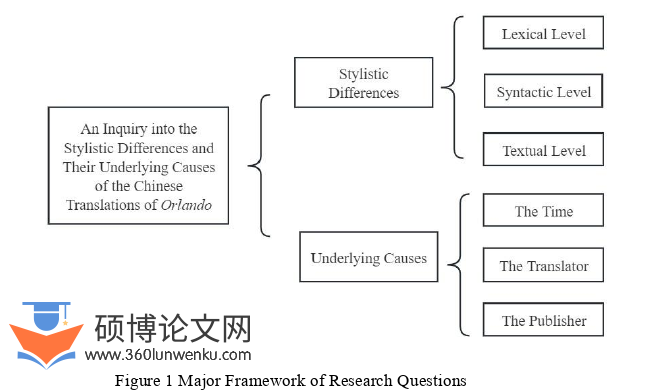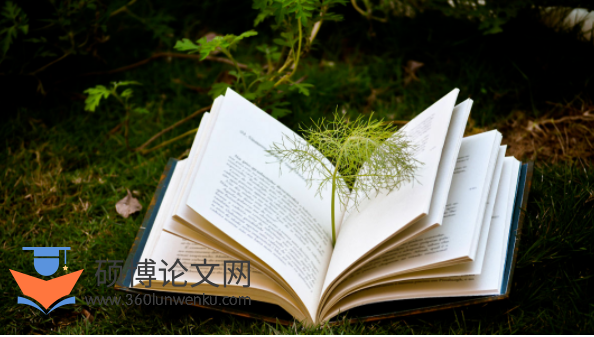本文是一篇英语论文,本文采用定量为主、定性为辅的研究方法,采用WordSmith和AntConc等软件,选取了人民文学出版社的林燕译本和上海译文出版社的任一鸣译本为语料,对比分析两位译者在词汇、句法、语篇三方面的独特风格特征,总结阐发两译本风格差异背后的时间维度、译者维度和出版商维度的成因,进而深化对文学作品风格差异的理解。
Chapter 1 Introduction
1.1 Research Background
Orlando is a novel written by British author Virginia Woolf. Woolf is one of the leading figures in the 20th century, and therefore Orlando is considered a masterpiece of modernist literature. The novel is unique because it spans four centuries and explores themes of gender, time, and identity through the experiences of the main character. Orlando receives a great deal of attention and discussion upon its release, and the ideas mentioned in this book invariably change the way readers think and see things.
As a literary classic, Orlando has not only had a significant impact on literary creation but has also played a far-reaching role in gender issues, feminist movements, cultural perceptions, and social consciousness, continuing to influence contemporary literature and society. The novel blends elements of biography, fantasy, and historical fiction. In a time when conversations about gender are more prominent than ever, Orlando serves as a precursor to modern ideas of non-binary gender identities. Woolf’s exploration of these themes is remarkably ahead of her time, making the novel a significant work for understanding the historical context of gender perceptions.
......................
1.2 Research Questions
In the context of cross-cultural communication, the translation of novels carries the important task of spreading ideas and stories from one language to another. The process of translation is the conversion of language and is also the reproduction of culture, emotion, and style. The translator’s style and understanding will inevitably affect the outcome of the translated text. Therefore, in-depth analysis and comparison of translations by different translators is of great significance in revealing the stylistic choices and cultural adaptation in the translation process. Utilizing corpora for research to delineate, scrutinize, compare, and elucidate subtle and less apparent linguistic patterns can more effectively reveal the distinct signature of the translator (Zhang Meifang 2002: 57). Quantitative stylistics can help researchers objectively compare and analyze different translations in terms of their word usage, sentence structure, and textual patterns.
This study aims to conduct a corpus-based comparative analysis of two Chinese translations of Virginia Woolf’s novel Orlando, focusing on linguistic characteristics and possible causes behind their different linguistic characteristics. Specifically, this study focuses on the following questions:
(1) What distinctive linguistic styles are notable in Ren’s and Lin’s translations? What are the differences in terms of lexical choices, syntactic structures, and textual features?
(2) What accounts for the stylistic differences between the translations?

英语论文怎么写
.......................................
Chapter 2 Literature Review
2.1 Previous Studies on Orlando
Orlando is a rich and complex novel that has sparked extensive discussion. Researchers have delved into its literary, cultural, and social significance through different perspectives and theoretical frameworks.
2.1.1 On the Origin of the Book
Earlier research on the novel has delved into various themes and viewpoints, reflecting the novel’s profound and complex content. Some have examined Orlando in the context of literature, noting Woolf’s significant contributions to this field. Some have discussed how Woolf urges the rewriting of history to include neglected female figures, a concept reflected in Orlando’s exploration of gender and identity across different historical periods. Lv Hongling (2002) put forward that Orlando was one of the most exaggerated works created by Woolf, which attracted many readers with its distinctive features, and its sense of social history and profound thinking about gender identity and creation had made it an indispensable research object in the hands of feminist researchers together with A Room of One’s Own.
Some scholars focus on the construction of gender identity and the author’s thinking about gender roles because the protagonist of the novel goes through two different identities. Cai Fang and Xie Baohui (2005) explained bisexual homoeroticism, then analyzed the context of this viewpoint in Orlando and pointed out the embodiment of bisexual homoeroticism in Woolf’s other works, to reveal the profound implication of Woolf’s literary creation.
............................
2.2 Previous Studies on Quantitative Stylistics
Quantitative stylistics uses many techniques to study how literary works are stylistically expressed. The approach can adopt statistical and computational methods to scrutinize the linguistic qualities of texts, aiming to uncover the stylistic traits or the similarities and distinctions among the texts. Employing corpora for scrutinizing translators’ styles presents an inventive strategy in quantitative stylistic approaches. This method depends on vast sums of text data accessible electronically. By comparing texts provided by various translators, it’s possible to find each translator’s distinct linguistic style, sentence formation, and textual characteristics. The analysis helps comprehend translators’ impact on a text’s definitive form and encourages a detailed examination of creativity and individual expression during translation.
2.2.1 Previous Studies on Quantitative Stylistics Abroad
Early experiments in quantitative stylistics can be traced back to the late 19th century. At that time, scholars began to use quantitative methods to analyze literary works, such as assessing the frequency of words to differentiate various texts by distinct authors. Thomas Corwin Mendenhall proposed a method of analyzing the style of literary works in 1890 by counting and comparing the distribution of word lengths in a text. He believed that different authors had different habits in using words. He thought these differences could be used as a means of identifying the author’s style. This can be seen as an early practice of quantitative stylistics. In 1901, he used the frequency of word length in his study of the plays of Shakespeare and Bacon and found that Shakespeare’s writings contained a higher frequency of four-letter words compared to three-letter ones, whereas Bacon’s works exhibited a greater prevalence of three-letter words over four-letter ones. This result suggested a marked difference in the distribution of word lengths between Bacon’s and Shakespeare’s writings.
...........................
Chapter 3 Theoretical Framework ............................ 12
3.1 Corpus Design ................................................. 12
3.2 Establishment of Stylistic Parameters ............................ 13
3.3 Data Collection and Text Processing.................................. 14
Chapter 4 A Comparative Analysis of the Styles of the Two Versions ...................... 18
4.1 Lexical Level ........................................... 18
4.1.1 TTR and STTR ........................................... 18
4.1.2 Lexical Density .............................................. 19
Chapter 5 Discussion on the Reasons for Stylistic Differences between the Two Versions.......... 39
5.1 Reason of Time ................................... 39
5.2 Reason of Translator ............................. 41
Chapter 5 Discussion on the Reasons for Stylistic Differences between the Two Versions
5.1 Reason of Time
Time has a significant impact on a translator’s style, as the evolution of language usage habits, cultural contexts, and translation techniques over time may lead to changes.
At the beginning of the 21st century, the release of two translations reflects the strong interest of contemporary readers in foreign cultural resources. The translation and introduction of foreign cultural novels into China broadens the horizons of Chinese readers and enriches cultural diversity, which is a great contribution to China’s cultural ecology. Such diversity is a manifestation of cultural richness and a driving force for cultural innovation and development, which satisfies the public’s demand for knowledge exploration, cultural experience, and diversity of spiritual life. In addition, such cultural exchanges and mutual understanding enhance the public’s cultural quality and aesthetic appreciation, and at the same time prompt them to deeply reflect on and scrutinize their local culture. They can make people discover the unique value of Chinese culture and its path forward. This kind of cross-cultural dialog is the key to promoting the innovation and development of Chinese culture.

英语论文参考
.............................
Chapter 6 Conclusion
6.1 Major Findings
This thesis builds its corpus and uses corpus tools to study the stylistic features of the two translations of Orlando in terms of lexical, syntactic, and textual dimensions. Contrasted with conventional translation research, corpus-based translation analysis offers a fresh research avenue for studying disparities between translations and source languages, as well as variances among multiple translations. The quantitative analysis enables translation research to go beyond the limitations of subjective evaluation and provides objective and measurable analysis results. Besides, quantitative stylistics enables researchers to process and analyze a large amount of translated text data, to conduct cross-linguistic and cross-cultural large-scale comparative research, which is difficult to realize in the traditional method. By analyzing statistical data from translations, researchers can identify translators’ styles and preferences and understand how these styles affect the formation and reception of translations.
The study’s findings indicate that both translations display coherence and notable distinctions in their stylistic approaches. Each of the two translations successfully communicates the content of the original novel to its audience, employing different conjunctions to unveil the inherent semantic links within the text.
reference(omitted)
